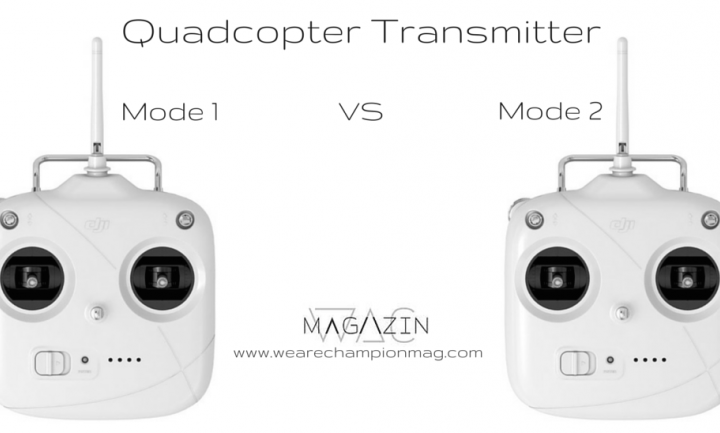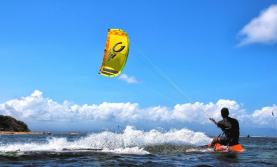Quadcopter transmitter mode2 VS mode1 - Difference
Image

A quadcopter’s transmitter is one of the most integral parts of flying your aerial device as it helps in controlling it and doing the functions that you want to achieve with your quadcopter or drone. Not just controlling its flights and stunts, but even the different setting that you need for capturing videos and pictures can be adjusted with the help of the controller.
Here’s a guide for everything you need to know to understand the functions of a quadcopter transmitter.
Channels
Over the past few years, quadcopter transmitters have remained almost the same when it comes to their appearance and their basic controls. The term "Channels" refers to the number of directional controls that the transmitter has.
Quadcopters generally need 4 channels of control - Throttle, Yaw, Pitch, and Roll, and they have 2 control sticks, laced next to each other, to be used with your left and right hand.
Throttle – ascending or descending.
Yaw – rotating clockwise or counter clockwise.
Roll – tilting left or right.
Pitch – tilting forward or backward.
Modes
What does vary between different controllers is what the sticks control. These changes can be up to 4 combinations that are known as "Modes". The two most commonly used modes for quadcopter transmitters are Mode 1 and Mode 2. But it becomes quite difficult for people to switch between these two modes all the time and that is why most prefer using Mode 2.
The difference between Modes 1 and 2 are shown below.
Rates
A gyro-stabilized quadcopter only has the ability to slant a prearranged maximum tilt in any given direction. When you move the cyclic controller to its maximum in a direction, the quadcopter wouldn’t keep tilting till it overturns. This is because the gyro sensors prevent it from happening. Though, the maximum swerve will differ in each quadcopter.
The tilting of a quadcopter is the main process that helps you control its speed. This means that the maximum tilt delivers the maximum speed that your quadcopter can fly. Most of the transmitters let you choose diverse amounts of that divergence and these are called "Rates" and can be chosen in terms of the percentage of its maximum rate.
Typically, a quadcopter takes the same amount of time to attain the maximum tilt of each rate, so for a lower rate, it will tilt and respond slowly. Lower rates are suitable for people who have just started flying drones and quadcopters, as they give you more time to respond. Tilting reaction at higher rates is much quicker and can make your aerial machine turn and stop swiftly as it is very easy to overcompensate in such a situation.
Trim
When you are flying your quadcopter or drone, you will notice that it has a tendency to constantly glide in some particular direction. This can happen due to 2 reasons. One is that the wind will be pushing it in the direction that it is blowing, and to remedy that you will have to fly by either somewhat slanting the cyclic controls towards the wind, or by steering the quadcopter’s nose a little toward the wind (crabbing).
The other reason for the shift in direction can be because the gyro sensor is not calibrated properly for understanding a true level position and so it may be continuously (tilting the quadcopter in order to attain a wrong level position.
This can be remedied easily by using the "Trim" buttons on the quadcopter’s transmitter. There are usually 4 buttons, one each for Throttle, Yaw, Pitch, and Roll. Throttle and Yaw seldom need any alteration, but Pitch and Roll may need to be modified frequently. Ensure that the surface you are using for calibrating the sensors is properly level.







